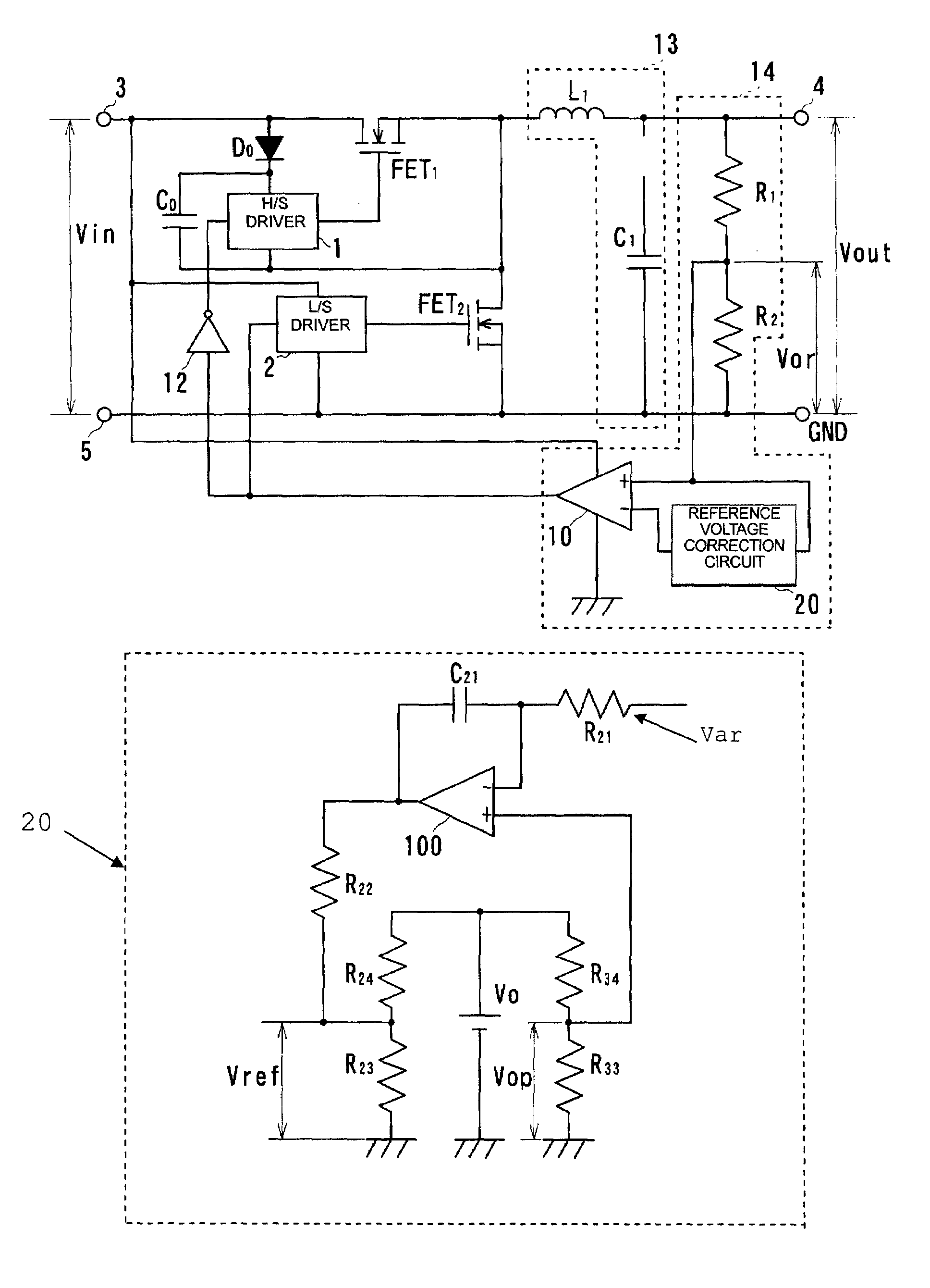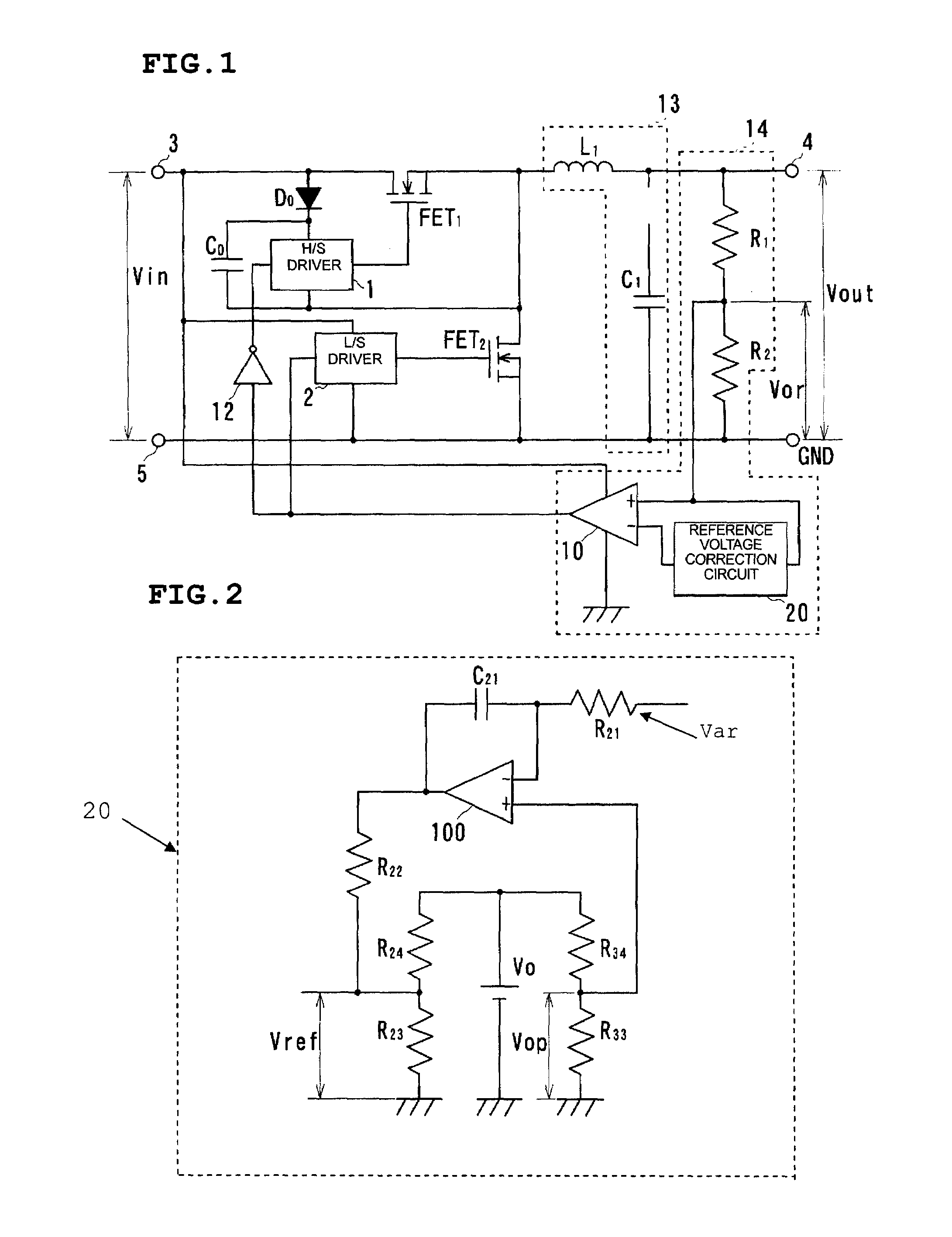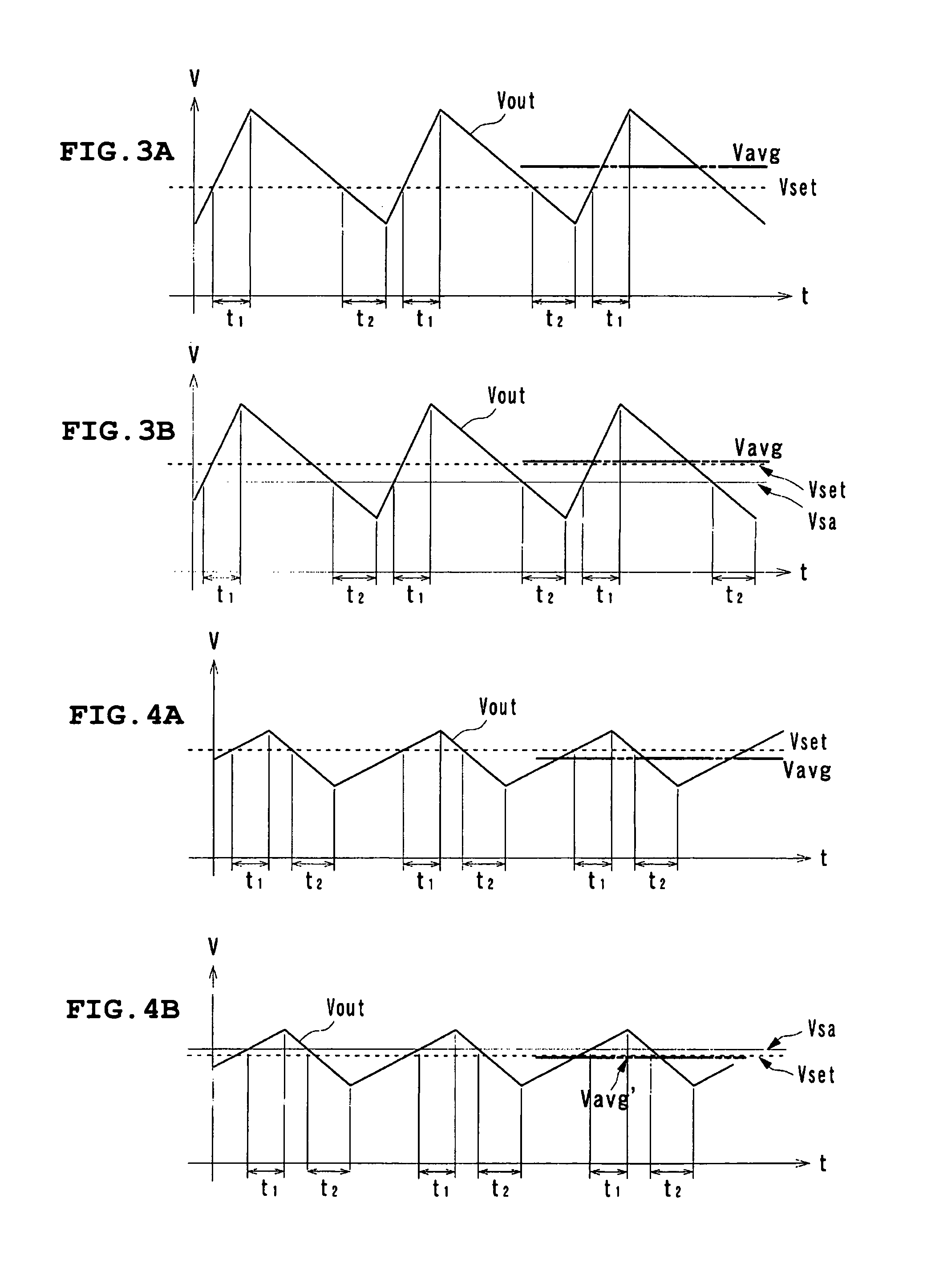DC-DC converter and converter device
a converter and converter technology, applied in the field of dc converters, can solve the problems of adversely affecting the operation of other converters, affecting the output voltage, and difficulty in uniformizing the load current of each ripple converter in parallel operation
- Summary
- Abstract
- Description
- Claims
- Application Information
AI Technical Summary
Benefits of technology
Problems solved by technology
Method used
Image
Examples
Embodiment Construction
[0051]A ripple converter type DC—DC converter according to a first preferred embodiment of the present invention is described with reference to FIGS. 1 to 5.
[0052]FIG. 1 is a circuit diagram showing the construction of a ripple converter of the present preferred embodiment.
[0053]Furthermore, FIG. 2 shows in detail a reference voltage correction circuit 20 in the ripple converter shown in FIG. 1.
[0054]As shown in FIG. 1, in the ripple converter of the present preferred embodiment, an N-type FET1 (hereinafter simply referred to as an FET1) and an inductor L1 are connected in order from the side of an input terminal 3 between the input terminal 3 and an output terminal 4. The drain of the FET1 is connected to the input terminal 3 and the source of the FET1 is connected to the inductor L1. Furthermore, the gate of the FET1 is connected to the control signal output terminal of an H / S driver circuit 1. Moreover, a bootstrap circuit in which a bootstrap diode D0 and a bootstrap capacitor C...
PUM
 Login to View More
Login to View More Abstract
Description
Claims
Application Information
 Login to View More
Login to View More - R&D
- Intellectual Property
- Life Sciences
- Materials
- Tech Scout
- Unparalleled Data Quality
- Higher Quality Content
- 60% Fewer Hallucinations
Browse by: Latest US Patents, China's latest patents, Technical Efficacy Thesaurus, Application Domain, Technology Topic, Popular Technical Reports.
© 2025 PatSnap. All rights reserved.Legal|Privacy policy|Modern Slavery Act Transparency Statement|Sitemap|About US| Contact US: help@patsnap.com



